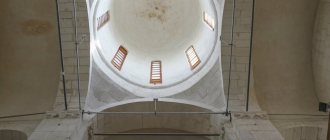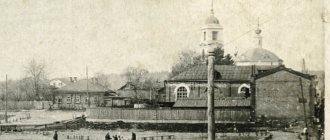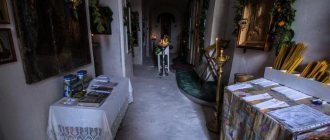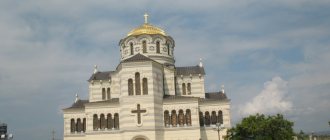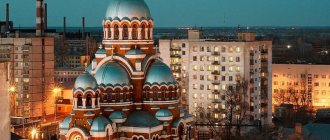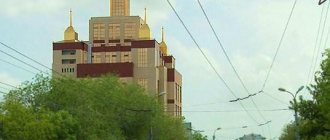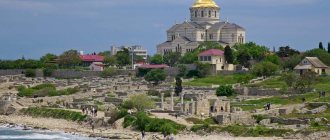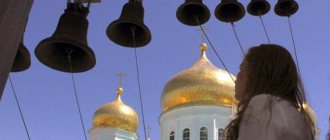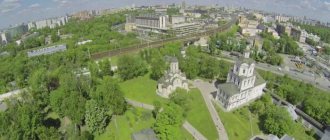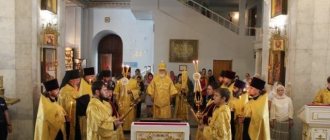Mir
Russia Nizhny Novgorod region Arzamas Resurrection Cathedral (Arzamas) Map is loading...
{"format":"leaflet","minzoom":false,"maxzoom":false,"limit":50,"offset":0,"link":"all","sort":[""], "order":[],"headers":"show","mainlabel":"","intro":"","outro":"","searchlabel":"\u2026 \u0441\u043b\u0435\ u0434\u0443\u044e\u0449\u0438\u0435 \u0440\u0435\u0437\u0443\u043b\u044c\u0442\u0430\u0442\u044b","default":"","import-annotation":false,"width ":"auto","height":"350px","centre":{"text":"","title":"""link":"""lat":55.38667000000000228965291171334683895111083984375,"lon": 43.81333000000000055251803132705390453338623046875,"icon":""},"title":"","label":"","icon":"","lines":[],"polygons":[],"circles":[ ],"rectangles":[],"copycoords":false,"static":false,"zoom":8,"defzoom":14,"layers":["OpenStreetMap"],"image layers":[] ,"overlays":[],"resizable":false,"fullscreen":true,"scrollwheelzoom":true,"cluster":false,"clustermaxzoom":9,"clusterzoomonclick":true,"clustermaxradius":80, "clusterspiderfy":true,"geojson":"","clicktarget":"","showtitle":true,"hidenamespace":false,"template":"","userparam":"","activeicon": "","pagelabel":false,"ajaxcoordproperty":"","ajaxquery":"","locations":[{"text":"\u003Cb\u003E\u003Ca href=\"/palomnik/%D0% 92%D0%BE%D1%81%D0%BA%D1%80%D0%B5%D1%81%D0%B5%D0%BD%D1%81%D0%BA%D0%B8%D0%B9_% D1%81%D0%BE%D0%B1%D0%BE%D1%80_(%D0%90%D1%80%D0%B7%D0%B0%D0%BC%D0%B0%D1%81)\ » title=\»\u0412\u043e\u0441\u043a\u0440\u0435\u0441\u0435\u043d\u0441\u043a\u0438\u0439 \u0441\u043e\u0431\u043e\u0440 (\u0410\u 0440\u0437\u0430 \u043c\u0430\u0441)\»\u003E\u0412\u043e\u0441\u043a\u0440\u0435\u0441\u0435\u043d\u0441\u043a\u0438\u0439 \u0441\u043e\u043 1\u043e\u0440 (\u0410 \u0440\u0437\u0430\u043c\u0430\u0441)\u003C/a\u003E\u003C/b\u003E\u003Chr /\u003E\u003Ca href=\"/palomnik/%D0%A1%D0%B2%D0% BE%D0%B9%D1%81%D1%82%D0%B2%D0%BE:%D0%90%D0%BD%D0%BD%D0%BE%D1%82%D0%B0%D1%86 %D0%B8%D1%8F\" title=\"\u0421\u0432\u043e\u0439\u0441\u0442\u0432\u043e:\u0410\u043d\u043d\u043e\u0442\u0430\u0446\u0438\u044f\ »\u003E\u0410\u043d\u043d\u043e\u0442\u0430\u0446\u0438\u044f\u003C/a\u003E: »'\u0412\u043e\u0441\u043a\u0440\u0435\u0441\u 0435\u0301\u043d \u0441\u043a\u0438\u0439 \u0441\u043e\u0431\u043e\u0301\u0440 \u0432 \u0410\u0440\u0437\u0430\u043c\u0430\u0301\u0441\u0435 »' \u0437\u0430\u043d\u0438 \u043c\u0430\u0435\u0442 \u0434\u043e\u043c\u0438\u043d\u0438\u0440\u0443\u044e\u0449\u0435\u0435 \u043f\u043e\u043b\u043e\ u0436\u0435\u043d\u0438\u0435 \u043d\u0430 \u0421\u043e\u0431\u043e\u0440\u043d\u043e\u0439 \u043f\u043b\u043e\u0449\u0430\u0434\u0438. \u041e\u043d \u043f\u043e\u0441\u0442\u0440\u043e\u0435\u043d \u0432 \u0447\u0435\u0441\u0442\u044c \u043f\u043e\u0431\u043 5\u0434\u044b\u0440\u0443\u0441 \u0441\u043a\u043e\u0433\u043e \u043d\u0430\u0440\u043e\u0434\u0430 \u0432 \u041e\u0442\u0435\u0447\u0435\u0441\u0442\u0432 \u0435\u043d\u043d\u043e\u0439 \u0432\u043e\u0439\u043d\u0435 1812 \u0433\u043e\u0434\u0430.","title":"\u0412\u043e\u0441\u043a\u0440\u0435\u0441\u0435\u043d\u 0441\u043a\ u0438\u0439 \u0441\u043e\u0431\u043e\u0440 (\u0410\u0440\u0437\u0430\u043c\u0430\u0441)»»link»:»»»lat»:55.386670000000002289652911 71334683895111083984375,"lon":43.81333000000000055251803132705390453338623046875, "icon":""}],"imageLayers":[]}
55.386671; 43.81337
Russia, Nizhny Novgorod region, Arzamas, Cathedral Square, 19
Arzamas, Nizhny Novgorod region 607223
Russia
Phones:
(83147) 9-43-46 (deanery office), 9-44-93 (accounting)
Resurrection Cathedral in Arzamas
occupies a dominant position on Cathedral Square. It was built in honor of the victory of the Russian people in the Patriotic War of 1812.
History[edit]
According to legend, on the site of the current Resurrection Cathedral, the first church in Arzamas was built in the name of the Archangel Michael of God during the founding of the city by Tsar Ivan IV Vasilyevich the Terrible in 1552. A hundred years later, instead of the dilapidated church, a new one, also made of wood, was built in honor of the Glory of the Resurrection of Christ. In the 18th century, it was moved from Arzamas to the village of Kostylikha, where it remains to this day. Instead of a wooden cathedral, in 1742 a stone five-domed church was erected in honor of the Resurrection of Christ with a chapel in honor of the Great Martyr John the Warrior.
After the triumph over Napoleon, the Arzamas residents unanimously decided to build a new cathedral “in gratitude to the Lord God for the victory of the Russian Power... and the deliverance of the Church and the Fatherland from the invasion of the Gauls and with them twelve languages.” For this purpose, a box for collecting donations was installed on the city's Cathedral Square. Every resident of Arzamas considered it his duty to make a contribution to the common cause. Built entirely with public money, for almost two centuries the Resurrection Cathedral has been a symbol of the military glory of Russia, the valor of Russian weapons and the heroism of the defenders of the Fatherland of all times. That is why, as one of the relics, before the revolution, it kept the banner of the Arzamas squad of the State Militia, transferred to the temple in 1815 by its chief Fyodor Stremoukhov.
Construction of the temple began in 1814 according to the design of the architect, a native of Arzamas M.P. Korinthsky - an outstanding master of late classicism. Construction lasted 28 years. Finishing work and painting lasted 21 years. The cathedral was painted by students of the Arzamas school of painting A.S. Stupin by Osip Semenovich Serebryakov and his son Alexander. The majestic carved iconostases were made by the brothers Vasily and Klim Lomakin.
The main altar in honor of the Resurrection of Christ was consecrated in 1840. The remaining chapels were consecrated successively in 1832, 1833, 1834 and 1842.
In 1932, the cathedral was closed and turned into a museum of atheism. Paradoxically, thanks to the museum, the original appearance and unique interior decoration of the cathedral, as well as many revered shrines of Arzamas, which were brought here from destroyed temples, have been preserved.
In 1944, during the Great Patriotic War, at the numerous requests of believers and incessant petitions to representatives of the authorities of the Primate of the Russian Orthodox Church, a native of Arzamas, His Holiness Patriarch Sergius (Stragorodsky), the cathedral was returned to the Nizhny Novgorod diocese, and liturgical life was resumed in it.
Time of destruction and restoration
At the beginning of the 20th century, Arzamas could be called a large monastic ensemble, which included about thirty churches and four monasteries. The revolutionary bacchanalia caused alarm among famous architects and specialists from the Hermitage, who “ringed all the bells” to save the unique city, but no one heard them.
By the beginning of the 30s, two churches of the Transfiguration and Resurrection survived in all of Arzamas. After the revolution, they wanted to blow up the Cathedral of the Resurrection of the Lord in Arzamas, but, fearing the indignation of the townspeople, they simply closed it. A gym was set up there, political prisoners were kept, and a museum was founded in 1932.
Important! At the insistent requests of Patriarch Sergius, whose grandfather devoted 32 years to serving in the Church of the Resurrection, the issue of opening the Arzamas shrine was decided since 1944, and the authorities met him halfway.
In 1947, the first church service after the closure was held. The Arzamas Resurrection Cathedral was restored for the celebration of the millennium of the Baptism of Rus', but life made its own adjustments. A terrible accident occurred in the city in 1988; as a result of the explosion of two carriages with explosives, a city block was destroyed, people died, and not a single intact glass was left in the temple buildings.
Divine service in the Arzamas Cathedral
When the Metropolitan of Leningrad and Novgorod visited the largest operating Orthodox cathedral of the Soviet era, the once beautiful temple was called a “pearl in the mud.” The Church of the Resurrection of the Lord was restored for the second time; in 1991, the relics of St. Seraphim of Sarov were temporarily located here.
The temple, in need of restoration, was repeatedly visited by the Patriarch of Moscow and All Rus' Kirill, who celebrated the Liturgy on August 13, 2021 in honor of the celebration of the 150th anniversary of Patriarch Sergius.
Current state[edit]
Interior decoration of the temple
The parish of the Cathedral for the glory of the Resurrection of Christ is located in the city of Arzamas, Nizhny Novgorod region. It is part of the deanery of the city of Arzamas of the Nizhny Novgorod diocese of the Nizhny Novgorod Metropolis of the Russian Orthodox Church and is the second department of the ruling Nizhny Novgorod bishop.
Currently, the parish has four churches: the cathedral in honor of the Resurrection of Christ, the church in honor of the icon of the Mother of God, called the “Life-Giving Source” (winter), the church in honor of the Kazan Icon of the Mother of God (baptismal), the assigned church in honor of the Intercession of the Blessed Virgin Mary in FKU "Arzamas educational colony" of the Federal Penitentiary Service of Russia in the Nizhny Novgorod region, in the village of Vysokaya Gora, Arzamas district. The clergyman of the parish is Priest Ilya Trushkin, dean of the district of the city of Arzamas.
Resurrection Cathedral is the main temple of the Arzamas deanery.
Architecture and decoration of the building
The monumental and majestic appearance of the temple symbolizes the greatness and power of Russia. Its appearance harmoniously combines symmetry, severity and simplicity.
Appearance
The cathedral has the shape of a Greek cross placed on a square. The cross signifies the idea of immutability, stability and balance. The entire structure stands on a stylobate - a high stepped base. The width and length of the building are equal (63.9 meters each), the height to the middle cross is 46.86 meters. The temple is framed by five spherical domes, four porticoes and high pediments, together forming 48 Ionic columns (each 13 meters high). The internal gates of the building are made of oak, and the external ones are cast from cast iron.
Painted walls and vaults
O.S. Serebryakov and his son Alexander, students of the Arzamas School of Painting named after A.V. Stupina, together with other stupin artists, painted the walls and vaults of the temple with ink on wet plaster from 1834 to 1837. Fourteen huge canvases depicting the life of Jesus Christ decorate the inside of the cathedral. All figures are made in human height. The samples were taken from masterpieces of Western painting. The figures of the twelve apostles are located between the windows in the main dome, and just below - the four evangelists.
Interior design
The interior decoration is made in a simple style and in harmony with the architectural appearance. Inside, a feeling of spaciousness, light and lightness is created thanks to skillfully made windows (24 of them). There is a slope near each window; they do not look directly inward. This is done so that the street does not interfere with prayer. The main decorations are monochrome frescoes by local artists. Icons of Jesus Christ and the Mother of God frame the altar doors of the main altar. The work on the icons was carried out by professor of painting N.M. Alekseev, who decorated St. Isaac's Cathedral in St. Petersburg. The floors are made of wooden beams. Light brown tones predominate, setting the mood for prayer.
Fresco painting
On the frescoes you can see the earthly life of Jesus Christ; gospel scenes are depicted in fourteen large canvases. The feeling of the integrity of the picturesque and architectural appearance is conducive to prayer. In the temple, only two paintings are painted in oils: the Trinitarian Deity and the Crucifixion. In some places, skillful ink painting can be mistaken for stucco. On the pediments of the building there are frescoes depicting biblical scenes: “The Resurrection of Christ” (eastern pediment), “Cathedral of All Saints” (western), “Appearance of St. Trinity to Abraham" (southern), "Protection of the Blessed Virgin Mary" (northern).
Thrones and iconostasis
Brothers Klima and Vasily Lomakin created a beautiful carved iconostasis that has survived to this day. The altars in the cathedral were consecrated as construction progressed. The central altar is consecrated in honor of the Resurrection of Christ. The right chapel is consecrated in honor of Mitrofan of Voronezh and Alexander Nevsky, and the left chapel is consecrated in honor of the holy martyr John the War. In honor of the Intercession of the Most Holy Theotokos and All Saints, there are two more chapels with single-tier iconostases in the semicircular niches of the porticos, on the right and left, respectively.
In Arzamas, it was customary for each parish to have two churches: a summer (“cold”) one and a warm one, with stoves. Resurrection Cathedral is cold. Services are held there during the period from Easter to the Intercession. And during the cold season, a second building is open - a heated temple in the name of the Most Holy Theotokos, Her Life-Giving Source.
Temple shrines
At a time when the temple was a museum of religion, the most revered shrines in Arzamas were moved to it. The main shrine of the city - the Honest Life-Giving Cross of the Lord - was brought from the Elias Church, where the local history museum is now located.
According to the chronicle legend, the cross was brought by the merchant Shayansky from the Makaryevskaya fair. One day he went to the pier after the Liturgy, and there a beautiful ship caught his attention. Boarding the ship, he saw the Holy Cross of the Lord. The young man immediately began to pray in front of him, and during this time the owner of the ship also approached. The merchant, experiencing pious delight, begged him to sell him the shrine. Having received consent, Shayansky ran to his brothers: they agreed to help him and gave him the required amount.
Returning the next day to the pier, the merchant did not find any ship. The surrounding people answered ambiguously: some did not see the ship at all, others said that it sailed a couple of days ago. The young man took the Cross and went on foot to Arzamas, carrying it on himself. He walked more than a hundred kilometers in a day without feeling any fatigue. Having reached home, the merchant brought the crucifix onto the porch, but could not go further. He asked the parish priest to serve a prayer service, and while singing, he saw light emanating from the Cross. Realizing that he could not keep the shrine at home, the young man donated it to the temple.
Until now, the Cross shows miraculous signs:
- getting rid of the 1889 fires of the temple where the shrine was located;
- people have repeatedly seen the light emanating from the face of the Crucified One during prayer services;
- cases of healing of infants and much more were noted.
The life-giving Cross of the Lord from Easter to the Intercession is found in the Resurrection Cathedral, and is transferred to the winter church in the cold season, when the cathedral is closed.
The icon of St. Nicholas of Mozhaisk was delivered from the St. Nicholas Monastery. On it, Saint Nicholas holds a city in his left hand, and a sword in his right. According to legend, the earnestly praying residents of the city of Mozhaisk saw the saint in heaven in exactly this form. Among the people, the icon itself received the name “Nicholas-forgive”, from the word “forgive”.
To the right of the Cross is the most ancient shrine of the temple - the 16th-century icon of the Resurrection of Christ. According to legend, the icon was left as a gift by Emperor Ivan the Terrible during the founding of the city.
Among the most revered icons of the Resurrection Cathedral, we list the following: the icon of the Intercession of the Most Holy Theotokos, the icon of “Joy of All Who Sorrow”, the image of the suffering Savior in the crown of thorns in Italian writing, the ancient icon of St. John the Warrior, the icon of the Most Holy Theotokos “Quiet my sorrows”, the Kazan icon of the Mother of God, the icon of St. Seraphim of Sarov, the icon of the Holy Blessed and Grand Duke A. Nevsky, the icon of the Mother of God “The Burning Bush”, the icon of the Mother of God “Seven Arrows”. A large number of wooden carved sculptures were also transferred to the temple.
Patronal holidays[edit]
Resurrection of Christ (Easter)
— Rolling date
Protection of the Blessed Virgin Mary
- October 14
Alexander Nevsky, noble prince
— December 6, September 12
All Saints Cathedral
- first Sunday after Trinity Day
John the Warrior, martyr
- 12th of August
Uniqueness of architecture
The unique architecture of the cathedral was created using five and a half million bricks, a thousand cubic meters of stone and 164 tons of iron. Nowadays, visible from all points of Arzamas, the cathedral is proud of the uniqueness of each of its four parishes, located in the form of a cross:
- northern - the martyr John the Warrior and Seraphim of Sarov;
- Western - Nicholas the Pleasant and All Saints;
- southern - Saints Alexander Nevsky and Mitrofan of Voronezh;
- eastern - Pokrovsky and John the Theologian.
Above the majestic building with strict 48 columns rise 5 chapters, decorated with slotted window openings. From above, the temple building looks like a Greek cross laid on a square. The cathedral pediments are decorated with large frescoes telling the story of the life of Christ and biblical heroes.
Interior decoration of the Resurrection Cathedral
On the eastern side, parishioners are greeted by the painting “The Resurrection of Christ,” and on the southern pediment is depicted “The Appearance of the Holy Trinity to Abraham.” It is impossible to pass by without stopping near the Western icon “The Cathedral of All Saints”.
The northern pediment is decorated with the holy image of the Intercession of the Blessed Virgin Mary. The monumentality contains a symbol of the greatness of Russia. Simplicity emphasizes the symmetry and severity of the structure.
Other temples and monasteries of Arzamas
The city of Arzamas is one of the centers of Russian Orthodoxy. There are quite a few existing churches of Arzamas on Cathedral Square and in the city as a whole, even despite the years of revolution. Over time, their number increases: ancient parishes are opened, new houses of God are built.
Today in the city there are ten active churches and temples, two monasteries - Spaso-Preobrazhensky male and St. Nicholas female. The Church of the Descent of the Holy Spirit was built in 1776. In 1929 it was converted into a printing house, but in 1995 the Diocese returned the temple to itself. The building is now operational and being restored.
In 1793, the Church of St. Andrew the First-Called was built. It contains a two-part, two-sided altar. There are no analogues to such a miracle in the entire Diocese. Divine services have been held since 2004.
Also in Arzamas are the churches of the Vladimir Icon of the Mother of God, the Entry of the Lord into Jerusalem and many others. Restoration work is underway on all of them.
God's temple turned into a museum
In the 30s, the local leadership came up with the idea of using the cathedral to house exhibitions of the museum of religion and atheism that had been created shortly before, as was done in Leningrad with St. Isaac's Cathedral. It should be recognized that this decision played a positive role in the fate of the historical monument and saved it from inevitable reconstruction or complete destruction. Familiar to the old-timers of the city, the schedule of services of the Resurrection Cathedral in Arzamas was replaced by a sign with the museum’s work schedule and a list of upcoming atheistic lectures, but in general the appearance of the building remained the same.
In those years, the museum created by the Bolsheviks became the focus of many Orthodox shrines, brought to it from the destroyed churches not only of Arzamas, but also of many other cities and villages of Russia. Among them, in particular, was a 17th-century altar cross, highly revered for centuries, which was located for more than two centuries in the St. Elias Church destroyed by the Bolsheviks, as well as a number of icons recognized as unique monuments of ancient Russian painting.
How are the services held?
The schedule of services is slightly different from the schedule adopted in Russian churches. On weekdays it begins with a prayer service at 7:30 in honor of the saint who is marked in the church calendar on that day. The Divine Liturgy follows at 8:00, and the all-night vigil (or Vespers and Matins) takes place at 17:00. On holidays and Sundays, the Divine Liturgy is added to the schedule, starting at 6:00. Please check the schedule before visiting.
The meaning of the cathedral
The most majestic temple in the city, the Resurrection Cathedral, was erected as part of the victory in the War of 1812 (architect Corinthian). For almost two centuries now, the temple has been a symbol of the heroism of the defenders of the Fatherland, the valor of Russian weapons and the military glory of Russia. Cathedral Square is named after him. Even in those days when the building was liquidated as a place of prayer, people still came to pray. Russian piety was reflected in the history of the temple, as in a mirror. I would like to believe that it has not dried up, and the beautiful cathedral will once again shine in all its beauty.
Interior decoration
Thanks to the abundance of light entering the cathedral through 24 vertically cut windows, the interior creates a feeling of vastness and space. In general, the interior design is made in muted brown tones, which helps to concentrate attention and create a prayerful mood among those present.
In addition to numerous frescoes depicting episodes from the earthly life of Jesus Christ, as well as traditional icons for any temple, the interior walls of the cathedral are decorated with a number of paintings, most of which are copies of works by famous European masters of the past who painted biblical subjects.
An example of this is the image of the Last Supper placed above the main altar, which is an exact reproduction of the famous painting by Leonardo da Vinci. Between the windows cut into the main dome, there are images of the 12 apostles, and below them, on the sails - that part of the structure that is the connecting link between the planes of the walls and the circumference of the dome drum - the figures of the four evangelists are written.
